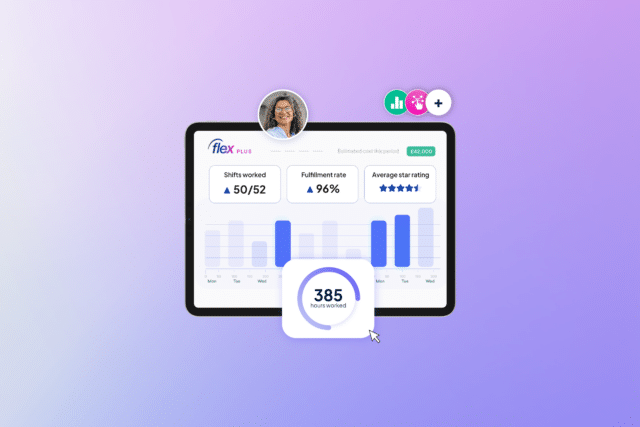
As more businesses rely on temporary workers, retention becomes an increasingly bigger challenge. As such, many businesses may ask the important question: How can we ensure our talent pool remains loyal and reliable? There are many options, and what will work best for your company will depend on various factors.
Investment in temporary or contingent workers has exploded in recent years. Some reports state that about 92% of companies anticipated an increase in their interactions with freelance workers in the coming 24 months. However, realizing the benefits of such a workforce requires access to a reliable pool of temporary talent. And that means leaders must ensure they retain the workers they do get by offering a consistently positive employee experience.
Competitive pay
There’s no getting around the question of compensation. Indeed Flex undertook a large survey of temporary workers and discovered pay rate was their number one priority. More than three-quarters (77%) ranked it among the three most important factors they take into account when considering a role. In fact, nearly a quarter (23%) said it was the number one thing they cared about, while just over a quarter (26%) felt they weren’t being fairly paid.
Inflation is only likely to increase the emphasis on pay, and organizations looking to retain staff will have to offer competitive rates. Business leaders will have to balance this with their own economic needs. They should consider developing more nuanced compensation methods to incentivize loyalty without damaging their bottom line.
One way to do this is by offering higher wages for temporary workers who consistently take on shifts. This will help connect compensation directly to loyalty and ultimately increase retention. Employers could even develop a retention budget specifically for such initiatives to measure the costs of keeping your temporary workforce on board.
More consistent work
Another concern raised by our surveys was the volume of work available. There’s been an increase in the number of temporary workers in developed economies, but this doesn’t always perfectly correlate with the amount of work available.
Workers feel they don’t have consistent access to the volume of work they want. Over 33% of respondents say employers aren’t consistent with their shift offerings. Organizations that can give them that work may be rewarded with far greater loyalty and engagement. This suggests that organizations looking to retain temporary workers might benefit from leaning more heavily on their talent pool. A positive feedback loop may ensue: the more shifts they can offer, the easier it’ll be to fill them.
Increase worker flexibility
According to our survey, the most commonly cited reason people choose to become temporary workers is the freedom and flexibility it offers. But many organizations view the primary role of temporary employees as to serve the business’s needs as it pertains to flexible availability. This can create some friction, as temporary employees desire more control over their schedules, while businesses may want them to essentially be ready to come in at the drop of a dime. Organizations that ensure their temporary workforce feels in control of their own shift patterns may see an increase in loyalty and retention.
There are many ways that an organization can accomplish this. First and foremost, organizations should consider introducing technology that enables employees to choose the shifts that fit their schedule and encourage them to feel comfortable doing so. Some leaders will note that this creates a risk for them. If workers have the freedom to choose when they work, certain shifts might end up not being filled. This is why it’s important to simultaneously increase the size of your temporary worker talent pool, to mitigate that risk and ensure all parties have their needs met.
Prioritize well-being and culture
Every HR leader knows that well-being and culture are cornerstones of employee retention efforts. But these are difficult areas to navigate with temporary workers, as they generally don’t have the same level of onboarding or cultural integration a permanent employee would have. This is reflected in the survey data: roughly 1 in 3 temporary workers feel disconnected from their leader and nearly 30% believe the companies they work for don’t care about their well-being.
Employers should focus on integrating their temporary workers with their full-time workers to ensure they feel included in the workforce culture. This might involve offering more rigorous onboarding, including regular temporary workers given staff rewards and invited to events, or bringing them into workforce group chats or social networks.
Perhaps the clearest way a business can demonstrate the value they place on the well-being of their temporary employees is by offering benefits packages. Healthcare coverage, in particular, is extremely valuable to employees and necessary for their personal well-being. Investments in such benefits not only look good for the company, but they also keep employees in good health and can discourage them from seeking out these benefits elsewhere.
Improve communication
The final piece of the puzzle is communication. Even if you put all of the above tips into action, they won’t have the desired impact if your temporary workforce isn’t actually aware of them. From social media to internal communication tools such as in-platform messaging, temporary workers should be involved and actively catered to in your communications strategy.
Furthermore, the right staffing provider can help you communicate directly with your workers and ensure they feel heard. This is why retention of temporary workers is easier when there’s a single provider for your entire workforce; it removes communication silos and ensures nothing gets lost in translation. As such, it’s important to compare providers and understand their offerings well before committing. You can accomplish this through efforts such as consultations and demos.
As you work to improve temporary employee retention, it’s important to remember this isn’t a one-and-done push. An effective employee retention strategy will necessarily include ongoing adjustments and monitoring. What’s most effective may change over time, and you’ll likely see more success if you measure and analyze the outcomes of your efforts to see what’s working and what’s not.
Book a demo to learn how Indeed Flex can improve your staffing.








